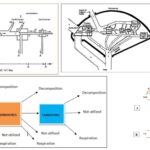What is a codon chart used for?
What is a codon chart used for?
Please login to submit an answer.
A codon chart is a vital tool in molecular biology that maps each of the 64 possible three-nucleotide sequences, known as codons, in messenger RNA (mRNA) to their corresponding amino acids or translational signals. Here’s how it’s used:
Decoding mRNA into Proteins: During protein synthesis, the ribosome reads mRNA sequences in sets of three nucleotides. Each codon specifies a particular amino acid. By referencing a codon chart, scientists can determine which amino acid corresponds to each codon, facilitating the translation of genetic information into functional proteins.
Identifying Start and Stop Signals: The chart highlights specific codons that signal the initiation (start codon, typically AUG) and termination (stop codons like UAA, UAG, and UGA) of protein synthesis. Recognizing these signals is crucial for understanding where a protein-coding sequence begins and ends.
Analyzing Genetic Mutations: By comparing normal and mutated mRNA sequences using the codon chart, researchers can predict how changes in nucleotide sequences may alter the resulting amino acid sequence, potentially affecting protein function.
Educational Purposes: In academic settings, codon charts serve as foundational tools for teaching genetics and molecular biology, helping students grasp the relationship between nucleotide sequences and protein synthesis.
Codon charts are typically presented in tabular or circular formats, both designed to facilitate the translation of mRNA sequences into amino acid chains.
- Share on Facebook
- Share on Twitter
- Share on LinkedIn
Helpful: 0%




